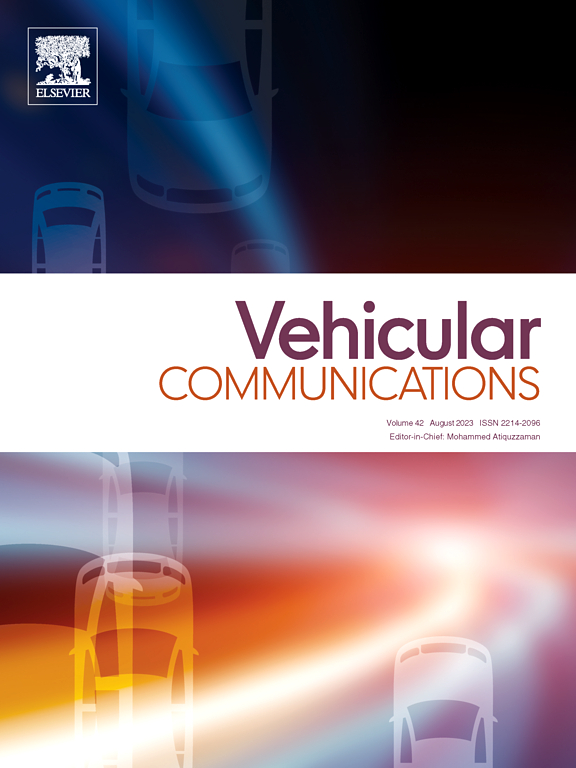A comprehensive survey of deep reinforcement learning in UAV-assisted IoT data collection
IF 6.5
2区 计算机科学
Q1 TELECOMMUNICATIONS
引用次数: 0
Abstract
Unmanned Aerial Vehicles (UAVs) play a critical role in data collection for a wide range of Internet of Things (IoT) applications across remote, urban, and marine environments. In large-scale deployments, UAVs often face complex decision-making challenges, for which Deep Reinforcement Learning (DRL) has emerged as a promising solution. This paper presents a comprehensive review of research on UAV-assisted IoT utilizing DRL, covering key research questions relating to DRL algorithm variants, deployment objectives, architectural features, integrated technologies, UAV roles, optimization constraints, energy management strategies, and performance metrics. Findings indicate that value-based and actor-critic algorithms are the most commonly employed, targeting objectives such as path planning, transmit power control, scheduling, velocity and altitude control, and charging optimization. Other architectural considerations include clustering, security, obstacle avoidance, buffered sensors, and multi-UAV coordination. Beyond data collection, UAVs are also used for tasks such as device selection, data aggregation, and sensor charging, with energy management primarily achieved through charging and energy harvesting techniques. Performance is typically assessed using metrics like energy efficiency, throughput, latency, packet loss, and Age of Information (AoI). The paper concludes by outlining several promising research directions and open challenges critical to the successful deployment of UAVs as aerial communication platforms, especially in IoT data collection. By organizing existing work across key themes and outlining promising future directions, this review offers a valuable reference for researchers and technology professionals alike.
深度强化学习在无人机辅助物联网数据采集中的综合研究
无人机(uav)在远程、城市和海洋环境中广泛的物联网(IoT)应用的数据收集中发挥着关键作用。在大规模部署中,无人机经常面临复杂的决策挑战,深度强化学习(DRL)已成为一种有前途的解决方案。本文全面回顾了利用DRL的无人机辅助物联网应用,涵盖了关键研究问题、DRL算法变体、部署目标、架构特征、集成技术、无人机角色、优化约束、能源管理策略和性能指标。研究结果表明,基于价值的算法和行为者批评算法是最常用的,针对的目标包括路径规划、传输功率控制、调度、速度和高度控制以及充电优化。架构考虑包括集群、安全性、避障、缓冲传感器和多无人机协调。除了数据收集,无人机还用于设备选择、数据聚合和传感器充电等任务,主要通过充电和能量收集技术实现能量管理。通常使用能效、吞吐量、延迟、数据包丢失和信息年龄(Age of Information, AoI)等指标来评估性能。最后,本文概述了几个有前途的研究方向和开放的挑战,这些挑战对无人机在物联网数据收集中的成功部署至关重要。
本文章由计算机程序翻译,如有差异,请以英文原文为准。
求助全文
约1分钟内获得全文
求助全文
来源期刊

Vehicular Communications
Engineering-Electrical and Electronic Engineering
CiteScore
12.70
自引率
10.40%
发文量
88
审稿时长
62 days
期刊介绍:
Vehicular communications is a growing area of communications between vehicles and including roadside communication infrastructure. Advances in wireless communications are making possible sharing of information through real time communications between vehicles and infrastructure. This has led to applications to increase safety of vehicles and communication between passengers and the Internet. Standardization efforts on vehicular communication are also underway to make vehicular transportation safer, greener and easier.
The aim of the journal is to publish high quality peer–reviewed papers in the area of vehicular communications. The scope encompasses all types of communications involving vehicles, including vehicle–to–vehicle and vehicle–to–infrastructure. The scope includes (but not limited to) the following topics related to vehicular communications:
Vehicle to vehicle and vehicle to infrastructure communications
Channel modelling, modulating and coding
Congestion Control and scalability issues
Protocol design, testing and verification
Routing in vehicular networks
Security issues and countermeasures
Deployment and field testing
Reducing energy consumption and enhancing safety of vehicles
Wireless in–car networks
Data collection and dissemination methods
Mobility and handover issues
Safety and driver assistance applications
UAV
Underwater communications
Autonomous cooperative driving
Social networks
Internet of vehicles
Standardization of protocols.
 求助内容:
求助内容: 应助结果提醒方式:
应助结果提醒方式:


